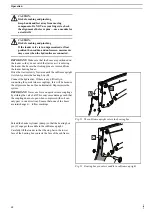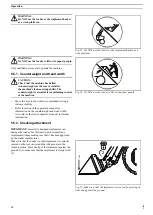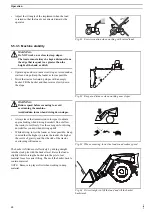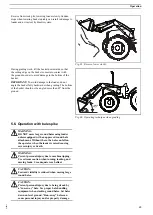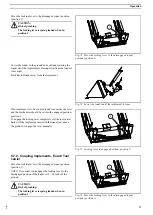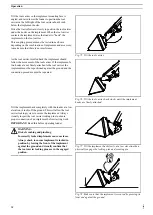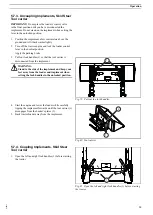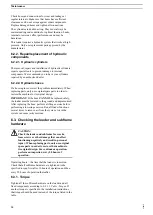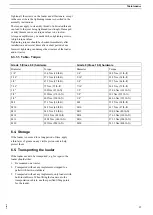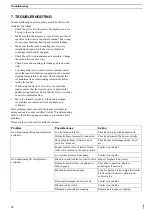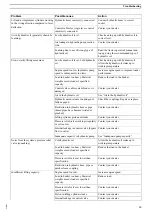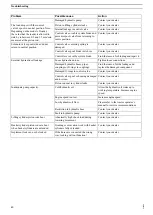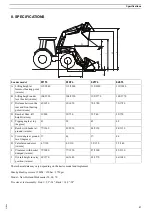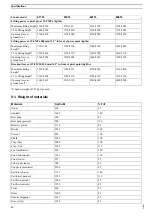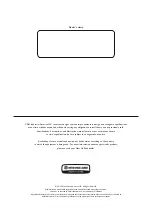
Troubleshooting
216186
38
7. TROUBLESHOOTING
Loader malfunctions are frequently caused by factors not
related to the loader:
•
Check the oil level in the tractor's hydraulic reservoir.
Top up to the correct level.
•
Make sure that the correct oil is used. Only use the oil
specified in the tractor's operator's manual. The wrong
oil can cause foaming, heating and internal leakage.
•
Make sure that hoses and couplings are correctly
installed and connected to the tractor. Hydraulic
couplings must be fully engaged.
•
Check the oil for contamination and moisture. Change
the oil and filter as necessary.
•
Check hoses and couplings for leakage, abrasion and
twist.
•
Low temperatures can cause slow movements and/or
cause the loader to function irregularly until a normal
working temperature is reached. Check whether the
oil maintains its normal working temperature before
testing the loader.
•
When using the tractor's own valve to control the
loader, ensure that the tractor's valve is adjusted for
double-acting function. Check that the flow control has
been set to maximum flow.
•
Move the loader's cylinders to their end positions
several times to remove air from the hoses and
cylinders.
Most problems that occur with the loader are simple in
nature and can be easily rectified. Use the "Troubleshooting
table" on the following pages to help you locate and solve
problems.
Please contact your dealer for further assistance.
Problem
Possible cause
Action
Low hydraulic oil level.
Check and top up with hydraulic oil.
Hydraulic hoses incorrectly connected.
Check and connect the hoses correctly.
The hydraulic hoses to/from control
valve are “blocked”.
Check hoses for damage (kinks, twists,
etc.).
Loader control valve or tractor's main
relief valve is stuck in the open position.
Contact your dealer.
Non-functioning lifting and implement
cylinders
Low system pressure from pump.
Contact your dealer.
Break in control cables for control valve. Inspect. Replace if necessary.
Hydraulic quick-release couplings not
fully engaged.
Check the connection. Replace
coupling(s) if necessary.
Blocked hydraulic hose/pipe.
Look for damage to hose/pipe that could
block oil flow between cylinder and
control valve.
Piston unit damaged (does not seal).
Contact your dealer.
Blocked control valve.
Contact your dealer.
Non-functioning lift or implement
cylinders
Damaged quick-release coupling.
Replace quick-release coupling.
Summary of Contents for 611TL
Page 2: ......

